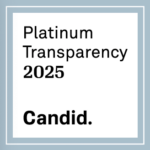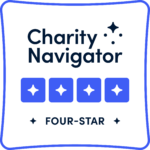Industry and researchers welcomed a set of guidances from the US Food and Drug Administration (FDA) that seek to expand eligibility criteria in oncology clinical trials, but they pushed for clearer examples of how to apply the proposed flexibility, especially in early-stage trials.
In April 2024, FDA issued a set of three draft guidance documents aimed at encouraging sponsors to expand the eligibility criteria in oncology clinical trials. The guidances focused on the use of laboratory values, washout periods and concomitant medications, and performance status in determining eligibility (RELATED: FDA issues three guidances to expand cancer clinical trial eligibility, Regulatory Focus 29 April 2024). The guidances are the latest push by the agency to diversify the participants enrolled in clinical trials.
Lab values
The Multi-Regional Clinical Trials Center of Brigham and Women’s Hospital and Harvard (MRCT Center) praised FDA for offering the lab value guidance, noting that “overly restrictive laboratory value-based eligibility criteria are problematic” and may exclude patients who would benefit the most from participation in the trial. But the group commented that the recommendations are “broad and directional” and would be “hard to implement.”
For instance, the draft guidance advises sponsors to adjust the laboratory eligibility criteria based on additional clinical data as drugs move from early to late phase trials. However, the MRCT Center notes that early phase trials are unlikely to produce the additional clinical data needed because they have restrictive laboratory value-based eligibility criteria.
“FDA should provide further examples of and direction to broadening eligibility as the product development pathway proceeds such that, by the end of Phase 3 and for inclusion of data in the [New Drug Application], clinical trial experience largely reflects the intended population,” the MRCT Center wrote.
The Association for Clinical Oncology (ASCO) and Friends of Cancer Research (Friends) also praised the lab value guidance for its focus on ensuring that laboratory value-based criteria are only used to protect patient safety, not to exclude patients from trials. In joint comments, ASCO and Friends recommended FDA revise the guidance to allow for more than one repeat test in a certain period for critical values such as creatinine clearance, to prevent unnecessary exclusions due to transient lab values. The groups also recommended that the final guidance allow for flexible testing intervals associated with lab procedures, especially in Phase 3 trials.
Washout periods, concomitant medications
Bristol Myers Squibb (BMS) commented that the washout/concomitant drug guidance may be challenging to implement in early-stage studies where safety and preliminary efficacy are still being characterized. BMS suggested that FDA add language that addresses the use of concomitant drugs used for common comorbidities that are being investigated for anticancer potential and those that have reports of low-to-moderate anticancer activity, such as RANK-L inhibitors for osteoporosis.
Additionally, BMS suggested that FDA remove a recommendation to conduct drug-drug interaction evaluations early in drug development with the goal of informing selective dosing of the investigational or co-administered drug to a patient in subsequent trials. The company commented that the timing of drug-drug interaction studies varies and that it may not be appropriate to consider this if the dose/schedule has not been determined.
Moderna requested that FDA add information related to patients on hormonal therapy to prevent recurrence of early-stage cancer, taking hormonal contraceptives, and undergoing palliative radiation treatment.
The MRCT Center called on FDA to clarify how it is defining the term “medication,” such as whether that includes over-the-counter products, nutritional supplements or even implantable devices. Additionally, the group asked for specific guidance about how early in drug development the drug-drug interaction evaluations should be conducted and which interactions should be evaluated.
Performance status
BMS commented that the performance status guidance may be difficult to implement in early-stage studies and that it may be more applicable to late-stage studies. The company noted that even in late-stage studies with better defined safety and pharmacokinetic/pharmacodynamic profiles, the decision to include participants who are classified as performance status (PS) 2 should be based on the specific disease, target population, and combinations with other therapies.
Boehringer Ingelheim suggested limiting the inclusion of patients with lower performance in certain early-stage trials. Specifically, the company asked FDA to add a restriction that only patients with good performance status (ECOG PS 1 or lower or KPS 80 or greater) be considered for first-in-human phase 1 dose escalation trials and trials combining investigational agents in which the risk of drug-drug interaction or overlapping toxicities cannot be ruled out.
The MRCT Center, however, voiced concerns about the use of performance status as part of trial eligibility more broadly.
“We find FDA’s Draft Guidance on use of performance status is, however, problematic, and we strongly encourage FDA to eliminate (or perhaps severely restrict) the use of performance status as an eligibility criterion. Both the Karnofsky score and the ECOG score as measures of performance status are outdated, highly subjective constructs that are ableist (i.e., discriminatory against people with disabilities) at their core.”
Instead, the MRCT Center urged FDA should adopt alternative measures that better reflect clinical risks and the participant’s experience.
Comments on lab value guidance
Comments on washout period, concomitant medicine guidance
Comments on performance status guidance

